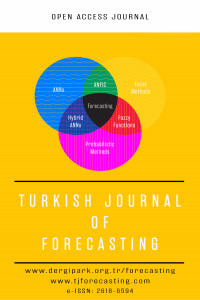Multi-layer Perceptron and Pruning
Multi-layer Perceptron and Pruning
ANN, Forecasting, Time series, Meteorology,
___
- C. Voyant, M. Muselli, C. Paoli and M.L. Nivet. "Numerical weather prediction (NWP) and hybrid ARMA/ANN model to predict global radiation", Energy, vol. 39, no. 1, (2012), pp. 341–55. doi:10.1016/j.energy.2012.01.006.
- C. Voyant, G. Notton, C. Paoli, M.L. Nivet, M. Muselli and K. Dahmani, "Numerical weather prediction or stochastic modeling: an objective criterion of choice for the global radiation forecasting", International Journal of Energy Technology and Policy, vol. 12, no. 3, (2014), pp. 01-28.
- A. Mellit, S.A. Kalogirou, L. Hontoria and S. Shaari, "Artificial intelligence techniques for sizing photovoltaic systems: A review", Renewable and Sustainable Energy Reviews, vol. 13, no. 2, (2009), pp. 406–419.
- G. Cybenko, "Approximation by superpositions of a sigmoidal function", Mathematics of Control, Signals and Systems, vol. 2, no. 4, (1989), pp.303–314.
- J. Fan and J. Pan, "A note on the Levenberg–Marquardt parameter", Applied Mathematics and Computation, vol. 207, no. 2, (2009), pp. 351-359.
- C.K. Yoo, S.W. Sung and I-B. Lee, "Generalized damped least squares algorithm", Computers & Chemical Engineering, vol. 27, no. 3, (2003), pp. 423–431.
- C. Voyant, W.W. Tamas, C. Paoli, A. Balu, M. Muselli, M.L. Nivet and G. Notton, "Time series modeling with pruned multi-layer perceptron and 2-stage damped least-squares method", 2nd International Conference on Mathematical Modeling in Physical Sciences 2013 (IC-MSQUARE 2013), Prague, Czech Republic, (2013), September 1–5.
- C. Voyant, W.W. Tamas, M.L. Nivet, G. Notton, C. Paoli, A. Balu and M. Marc, "Meteorological time series forecasting with pruned multi-layer perceptron and two-stage Levenberg-Marquardt method", International Journal of Modelling, Identification and Control, vol. 23, no. 3, (2015), pp. 287-294.
- H. Brusset, D. Depeyre, J-P. Petit and F. Haffner, "On the convergence of standard and damped least squares methods", Journal of Computational Physics, vol. 22, no. 4, (1976), pp. 534–542.
- J-P. Kreiss and E. Paparoditis, "Bootstrap methods for dependent data: A review", Journal of the Korean Statistical Society, vol. 40, no.4, (2011), pp. 357–378.
- F.M. Dias, A. Antunes, J. Vieira and A. Mota, "A sliding window solution for the on-line implementation of the Levenberg–Marquardt algorithm", Engineering Applications of Artificial Intelligence, vol. 19, no. 1, (2006), pp. 1–7.
- Yayın Aralığı: Yılda 2 Sayı
- Başlangıç: 2017
- Yayıncı: Giresun Üniversitesi
Multi-layer Perceptron and Pruning
Cyril VOYANT, Christophe PAOLİ, Marie-laure NİVET, Gilles NOTTON, Alexis FOUİLLOY, Fabrice MOTTE
Time Series Prediction with Direct and Recurrent Neural Networks
An Enhanced Neural-based Bi-Component Hybrid Model for Foreign Exchange Rate Forecasting
